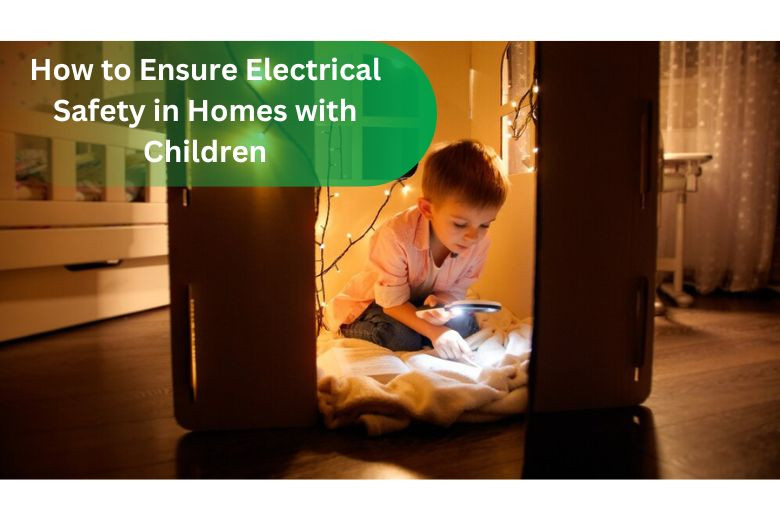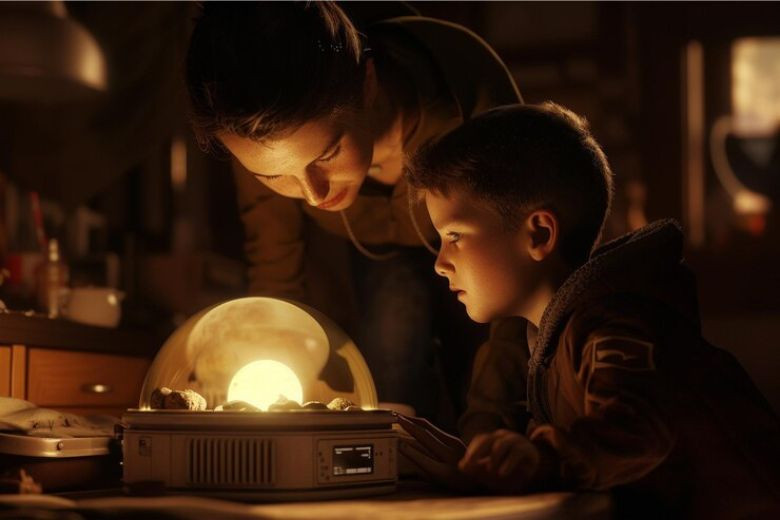How to Ensure Electrical Safety in Homes with Children
Posted on September 12, 2024 by Admin

Electrical safety in homes with children preserves your family's well-being and ensures the prevention of accidents. Since kids are little, inquisitive creatures who do not know that they can get themselves into electric dangers, here are the tips to maximally reduce the potential threats or help to keep a safe environment for you and your children at your home:.
1. Install Outlet Covers and Safety Caps
Outlet covers and safety caps are actually among the simplest but effective tools in the aim to make every home child-friendly, at the same time, electrical-safety-oriented. This gadget prevents children from sticking things into the electrical outlets, thereby preventing shocks or even a short circuit. The many types of outlet covers include the sliding cover and the tamper-resistant outlet. The graph is made so it would fit tight, hence giving a padlocked feature.
2. Keep the Cords and Wires Out of Reach
The loose or exposed cords and wires are an open invitation to the children's play and also tend to be quite dangerous. Keep all cords and wires out of reach to assure electrical safety. Use cord organizers or covers to securely hide the cords at home. Keep appliance and charger cords away from the floor, where children can reach them, tug on them, or trip over them. Implement some cord management solutions to keep all this organized.
3. Protect electrical panels and outlets
The electrical panels and outlets must be well covered and out of the reach of children. As such, locks are needed for most longitudinal and/or perpendicular panels, since they allow small children to open them. Use the outlet covers to block the access for those exposed outlets that are not in use. This way, you reduce the possibilities of children coming into contact with electrical parts.
4. Tell Your Kids about Electrical Safety
Instruct and inform your kids about electricity. Tell them the danger of electricity and that they should not come to the outlets, cords, or electric appliances. This way, they will know that electricity is not good to have fun with. If there is something they need to switch on, you can do that for them.

5. Proper Usage of Appliances and Tools
There should be a safe use of electrical home appliances and devices inside the house at all times. Replacement of pretty old cords with cracked insulation is quite necessary. It is never okay to overload any outlet with too many numbered devices, as this would often be the cause for the incidence of electrical fires. Use all your appliances according to what your manufacturer advises, and always be close when other children are operating devices that consume electricity.
6. Install Ground-Fault Circuit Interrupters
Ground-fault circuit interrupters are considered very important safety measures to check the possibility of electric faults in homes where most probably children might get affected by electricity due to water and the fact that children spend almost every moment in kitchens and bathrooms. GFCIs are installed at all places where they are felt necessary. Most importantly, they should always be checked to ensure proper functioning by turning off the power in case of an electric shock.
7. Regular Inspections of Your Electrical Systems
The very essence of being sure that children are safe in your home is carrying out regular checks on your electrical systems. Get a professional to assess all your wiring, power outlets, and electrical panels. It is also good to establish that all your electrical components are in good working condition without a trace of damage or wear and tear.
8. Safe and Secure Place to Store Electric Tools and Equipment
Keep electrical tools and batteries, as well as other electrical equipment, out of reach from children. Place them at locations where children cannot get access to them. The creation of circumstances such that children are not around while any electrical work is being done is highly recommendable, and, for all the electrical appliances, use those storage tools that have been designed with facilities to store other contents that are child-proof.
Conclusion
Electrical safety can be achieved in a home with children by caring, learning, and taking precautionary steps. With the installation of outlet covers, securing cords, informing your children about electrical safety, safe use of appliances, GFCIs in place, and regular checking of the electrical system, you will be better placed to have an electrically safe living environment. After all, electrical safety is a process, so taking every precaution will go a long way toward reducing the incidence of these electrical-related mishaps and saving your loved ones.
Also Read :
How to Finance Your Roof Replacement: Loans, Grants, and Insurance
Roof Safety Tips for Homeowners
The Impact of Algae and Moss on Your Roof
How to Deal with Roof Leaks During a Storm
How to Create an Electrical Maintenance Plan for Your Home
The Benefits of Green Roofs for Urban Homes
How to Finance Your Roof Replacement: Loans, Grants, and Insurance
Faqs
-
1. What is the best way to childproof electrical outlets?
Outlet covers or safety caps over electrical outlets are pretty good at keeping the child from inserting objects into them. Tamper-resistant outlets are even better because they obstruct the access to the electrical components unless a plug is inserted.
-
2. What should I do if I find exposed wires or damaged cords?
If you find exposed wires or damaged cords, replace them immediately. In fact, cracked cords can easily cause electrical shocks or fires. Never use a cord that has been damaged, and always keep your electrical components in good condition.
-
3. How often should I check my home's electrical systems for safety?
Have your home's electrical systems regularly inspected by a licensed electrician. This should be done, at a minimum, once a year. Regular inspections spot potential hazards, ensure that all of the components work properly, and help maintain electrical safety in homes with children.
-
4. What are GFCIs and why are they important in child safety?
GFCIs are set to shut off the power in case there is an imbalance of electrical current. If this is not done, it may result in electrical shock. They most significantly belong in areas that involve water, such as kitchens and bathrooms. They ensure the safety of electricity use within homes where children are present.
Recent Post
- Top Plumbing Service Providers in Arizona, USA
- Top 10 Electrician Service Providers in Alabama, USA
- Top 20 Roof Repair Service Providers in Alabama, USA
- The Role of Roof Insulation in Energy Efficiency: Tips and Tricks
- Understanding Roof Damage from Wildlife and How to Prevent It
- How to Choose the Best Roofing Contractor for Emergency Repairs
- Roofing Maintenance for Historic Homes: Preserving Architectural Integrity
- The Importance of Proper Attic Ventilation for Roof Health
- How to Identify and Prevent Roof Mold and Mildew
- The Best Practices for Removing Snow from Your Roof